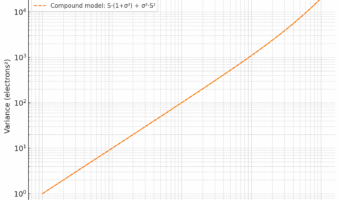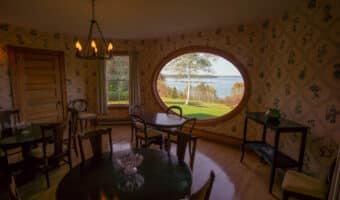In the previous post, I looked at photon shot noise, a fundamental noise source arising from the quantum nature of light. Today I’ll examine a different kind of noise: one that’s not random from frame to frame, but rather baked into the sensor itself: Pixel Response Non-Uniformity, or PRNU. PRNU refers to pixel-to-pixel variation in… [Read More]
Photon Noise and the Role of Quantum Efficiency
One of the most fundamental sources of noise in digital imaging sensors is photon shot noise, arising from the discrete and probabilistic nature of light. Even under perfectly stable illumination, the number of photons arriving at a sensor site over a fixed integration time fluctuates due to quantum randomness. This phenomenon obeys Poisson statistics. In… [Read More]
Sources of read noise in CMOS sensors
In another context, I’ve been asked about the sources of noise in CMOS image sensors. There are several kinds of noise involved: read noise, photon or shot noise, and pixel response nonuniformity (PRNU). This post attempts to give a non-quantitative listing of the sources of read noise. In CMOS image sensors, read noise refers to… [Read More]
Simulating Long Exposures in Photoshop Using Short Exposure Stacks
Long exposures can produce beautifully smoothed water, streaked clouds, and motion blur that adds atmosphere and drama. But shooting long exposures in-camera isn’t always ideal: ND filters may introduce color casts, hot pixels can accumulate, and a gust of wind can ruin a single frame. A practical alternative is to simulate a long exposure by… [Read More]
Using Lightroom Shadow Calibration Locally with Photoshop Layer Masks
Lightroom’s Calibration > Shadows > Tint slider is a powerful—but global—tool. It can help correct black point color casts or apply subtle shadow toning, but what if you want to apply different calibration settings to different parts of the image? One reason to want to do this is that the Lr shadows tint tool affects… [Read More]
- « Previous Page
- 1
- 2
- 3
- 4
- 5
- …
- 385
- Next Page »


